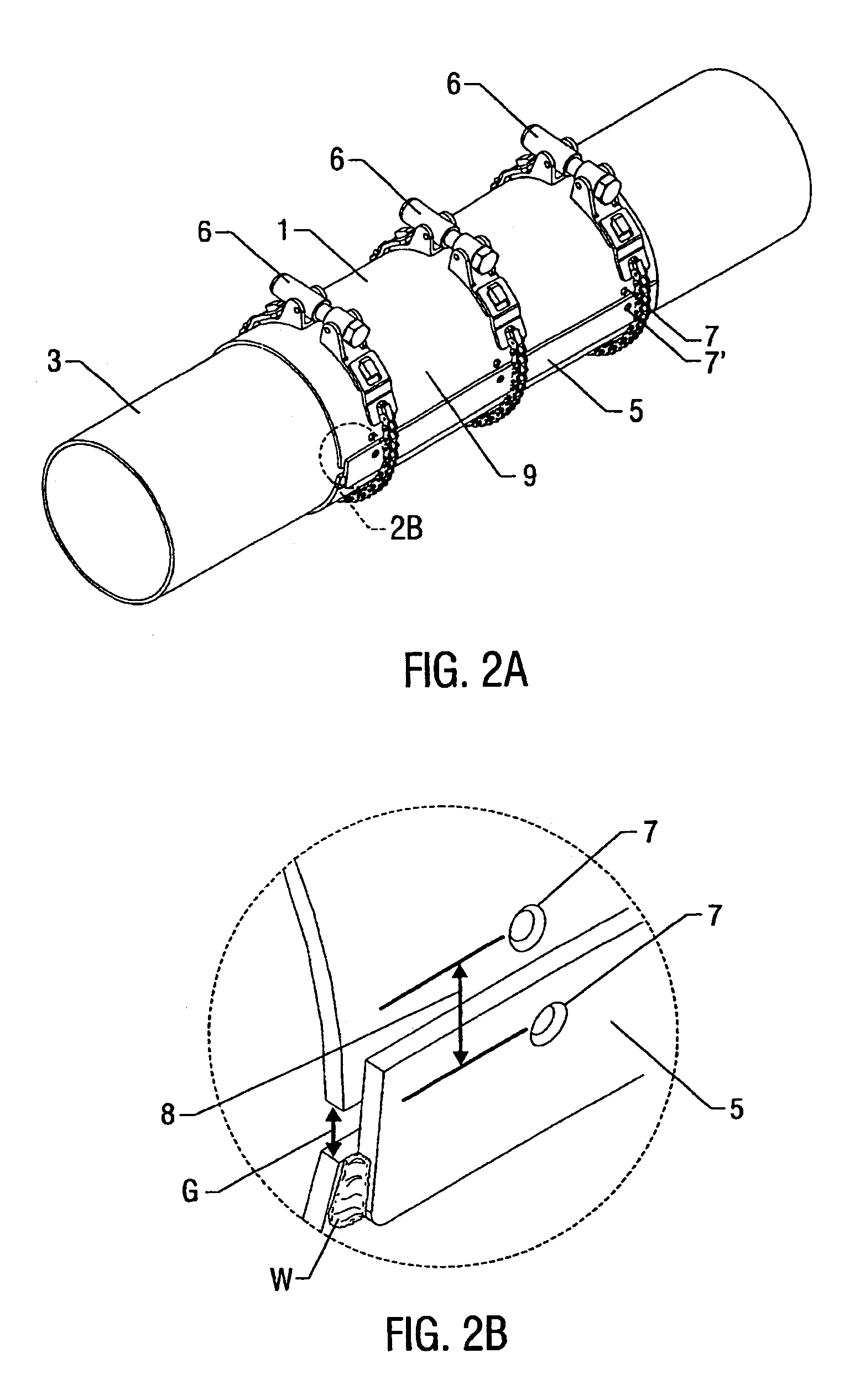Compression pipe repairing and reinforcing methods
a compression pipe and pipe joint technology, applied in fluid pressure sealing joints, sleeve/socket joints, mechanical equipment, etc., can solve the problems of internal tight fitting sleeves loosening and separation of pipes, affecting the integrity of operating oil and gas pipelines, and affecting the flow of products
- Summary
- Abstract
- Description
- Claims
- Application Information
AI Technical Summary
Benefits of technology
Problems solved by technology
Method used
Image
Examples
examples
[0069]To verify the efficacy of one embodiment of the above-described methods, an experiment was performed utilizing the apparatus and method described above with respect to FIGS. 4A–7E. Prior to performing the method, strain gages were applied to the inner diameter of the section of pipe to be repaired or reinforced along the entire length of the pipe section.
[0070]Compressive force was then calculated and applied as described above and measurements from the various strain gages were recorded over time. As can be seen from the following three tables, as the compressive force was calculated and applied, the section pipe, originally experiencing tensile hoop strain (shown here as positive values) at the installation pressure of 435 p.s.i., subsequently experienced compressive hoop strain excess over 100 microstrain in compression (shown here as negative values) after the repaired section was pressurized to the specified maximum operating pressure of 740 p.s.i. In this way, the method...
PUM
| Property | Measurement | Unit |
|---|---|---|
| length | aaaaa | aaaaa |
| distance | aaaaa | aaaaa |
| distance | aaaaa | aaaaa |
Abstract
Description
Claims
Application Information
 Login to View More
Login to View More - R&D
- Intellectual Property
- Life Sciences
- Materials
- Tech Scout
- Unparalleled Data Quality
- Higher Quality Content
- 60% Fewer Hallucinations
Browse by: Latest US Patents, China's latest patents, Technical Efficacy Thesaurus, Application Domain, Technology Topic, Popular Technical Reports.
© 2025 PatSnap. All rights reserved.Legal|Privacy policy|Modern Slavery Act Transparency Statement|Sitemap|About US| Contact US: help@patsnap.com



